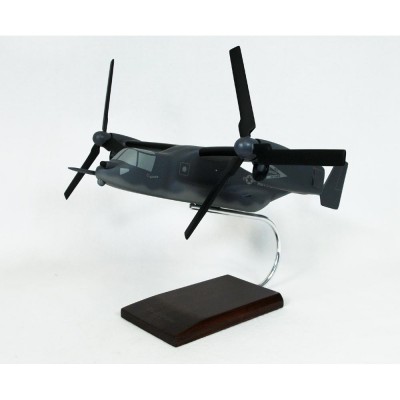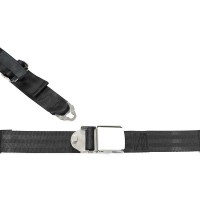1-877-795-2278 | info@aircraftspruce.ca
Aircraft Spruce Canada
Brantford, ON Canada
Corona, CA | Peachtree City, GA
Chicago, IL | Wasilla, AK
Aircraft Spruce Canada
Brantford, ON Canada
Corona, CA | Peachtree City, GA
Chicago, IL | Wasilla, AK
FREE SHIPPING ON ORDERS OVER $699 (SOME EXCLUSIONS APPLY) | 877-795-2278
Cv-22 Osprey Model
$388.00/Each
Part# 13-10827
MFR Model# HCV22TR
MFR Model# HCV22TR
Overview
|
The CV-22 Osprey is a joint service, multimission, military tiltrotor aircraft. It combines the vertical takeoff and landing qualities of a helicopter with the long range, fuel efficiency and speed characteristics of a turboprop aircraft. Built by the joint development team of Bell Helicopter Textron and Boeing Helicopters collectively known as Bell Boeing, its primary role is to conduct long range infiltration, exfiltration and resupply missions for special operations forces. The CV-22 is the United States Air Force version of the US Marine Corps MV-22 Osprey. Formally approved for full-rate production by the Pentagon on September 28, 2005, the Osprey is the worlds first production tiltrotor aircraft. The CV-22 is versatile and self-deployable, offering increased speed and range over other rotary wing aircraft. It can perform missions that would normally require both fixed wing and rotary wing aircraft. It is equipped with integrated threat countermeasures, a terrain-following radar, a forward-looking infrared sensor, and other advanced avionics systems that allow it to operate at low altitude in adverse weather conditions and medium to high threat environments. The first two test aircraft were delivered to Edwards Air Force Base (AFB), California in September 2000 for flight testing. The first operational CV-22 was delivered to the 58th Special Operations Wing at Kirtland AFB, New Mexico on March 20, 2006, and aircrew training began in August 2006. Initial operating capability of the aircraft is scheduled for 2009, with a total of 50 CV-22s delivered by 2017. |
Q&A
Please note, Aircraft Spruce Canada's personnel are not certified aircraft mechanics and can only provide general support and ideas, which should not be relied upon or implemented in lieu of consulting an A&P or other qualified technician. Aircraft Spruce Canada assumes no responsibility or liability for any issue or problem which may arise from any repair, modification or other work done from this knowledge base. Any product eligibility information provided here is based on general application guides and we recommend always referring to your specific aircraft parts manual, the parts manufacturer or consulting with a qualified mechanic.

 Aircraft Spruce Canada
Aircraft Spruce Canada






